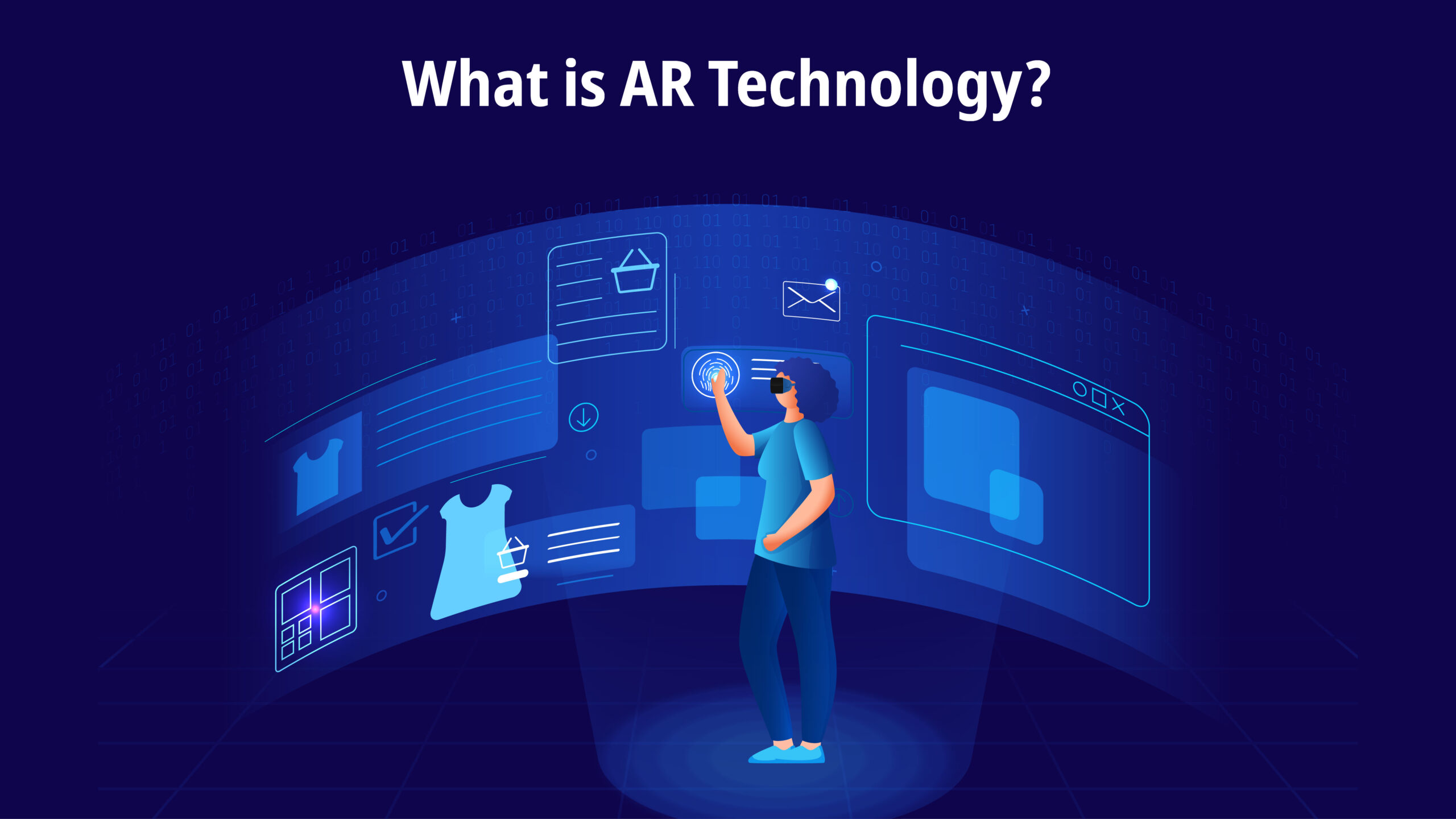In its early years, augmented reality (AR) swiftly gained recognition as a captivating entertainment medium, evident through the success of Pokemon Go, Snapchat filters, and various video games. However, in 2024, augmented reality has progressed beyond its initial entertainment-focused phase and is emerging as a potent business tool.
To unravel the evolving landscape, let’s delve into 5 AR technology trends that are making waves in 2024. By exploring each of these trends, we aim to shed light on how businesses can harness the potential benefits offered by augmented reality in the current landscape.
What is AR Technology?

Augmented Reality (AR) technology involves seamlessly integrating digital information and virtual elements into the real world, creating an interactive and immersive experience for users. This is achieved by overlaying digital content, such as images, videos, and 3D models, onto the physical environment. Common devices for AR experiences include smartphones, tablets, and AR headsets.
Key components of AR technology include cameras, sensors, and computer vision algorithms, working together to track the real-world environment and seamlessly superimpose digital content onto it. This fusion of the digital and physical realms enhances our perception and interaction with our surroundings.
Top 5 AR Technology Trends: The Future of AR Is Here To Stay
Traditionally, AR technology has been associated with VR. The future of AR and VR technology shapes concurrently as more users demand personalized, accessible, and well-designed experiences. Medical applications, including diagnosis, surgical visualization, treatment therapies, etc., are all getting revolutionized with the integration of AR and VR technology.
The predictions of AR growth alone in 2024 have been put into motion, with key players like Apple, Meta, and Microsoft utilizing AR and VR mixed-reality products to attract a huge chunk of customers. For instance, Apple is set to launch AR and VR headsets this year, building and establishing the future of AR and VR technology.
With customer experience setting the standard for brands, augmented reality is an effective technology for capturing people’s attention. Let’s look at how trends in 2024 are shaping the future of AR technology and what brands are doing to lead in the market:
1. Metaverse
The nascent network of 3D virtual worlds is expected to undergo significant expansion in the coming years. The metaverse will bridge the gap between service providers and consumers by overcoming the distinctions between reality and virtuality. As Mark Zuckerberg, the mastermind behind the Metaverse, has stated, augmented reality will fundamentally alter the relationship between human beings and technology.
For instance, Nike made a significant advancement in the realm of the metaverse by acquiring RTFKT, a company renowned for its expertise as a leading creator of digital artifacts. RTFKT specializes in the design of unique digital assets such as non-fungible tokens, virtual sneakers, collectibles, and other digital items that are highly sought after in the virtual fashion and gaming industries.
2. AR Meets AI For Advanced Optimization
It is important to note that while augmented reality (AR) and artificial intelligence (AI) are distinct technologies, they have an interconnected relationship. This is because AR relies heavily on advanced algorithms to process sensor data from the environment, which can be greatly enhanced by the capabilities of AI. As a result, the integration of AI into AR systems can lead to a more efficient and accurate interpretation of sensor data, as compared to relying solely on human-designed models.
For instance, Volkswagen Mobile Augmented Reality Technical Assistance (MARTA) integrates AI in AR for labeling vehicle parts to provide information about existing issues and how to fix them correctly.
3. Spatial Mapping & Sound All Around
The utilization of spatial mapping within industrial processes is facilitating a greater ability to adapt said processes to the specific conditions present on-site. It is anticipated that this solution will revolutionize how operations are conducted.
The continuous advancement of acoustic technology for spatial sound brings us closer to achieving the highly desired level of immersion in the virtual world. Through a more comprehensive assessment of the surrounding environment, procedures are becoming more efficient and less time-intensive.
For instance, Sony, one of the world’s top technology brands, introduced Sony 360 Spatial Sound Mapping which can create a dome of audio with an immersive sound experience to surround the room. This is possible with customizable Sound Field Optimization which has built-in microphones to surround the sound without losing its quality.
4. WebAR & Mobile AR As The Immersive Channels
WebAR represents a contemporary methodology for advertising and digital interactions. Utilizing merely a mobile device, individuals can initiate a 3D supplementary projection by pointing at an object, thereby generating a captivating and interactive experience.
On the other hand, mobile devices are commonly utilized by multiple users. AR headsets for mobile devices have leveraged opportunities for businesses to allow users an immersive experience on the go.
For instance, Apple’s ARKit 6 enables users to record videos in 4K while also improving its capture feature. When the lens is directed towards another individual, movement capture information can be obtained from their actions and utilized to animate a 3D representation.
5. AR Technology In Gaming
The future of AR in gaming has advanced to the “next level” by completing the mission of linking real-life surroundings with the digital world. This has enhanced the way players view interactive media and augments the interactive virtual environments present in these games. As AR in gaming transforms gaming experiences, this has gradually begun to replace traditional video games.
For instance, Pokemon Go allowed millions of people around the world to collect Pokemon on their smartphones. The future of AR in gaming was quickly redefined with this technology as gamers witnessed unique, innovative gameplay experiences; a phenomenon like never before.
Upcoming Immersive Trends To Curate The Future of AR
AR VR technology has witnessed a boost in various industries such as manufacturing, shopping (retail) healthcare, and automotive industries. For instance, the recent explosion of online shopping resulted in rising demand for virtual-try-ons. Dior partnered with Snapchat to launch the AR shoe try-on experience before users make a purchase.
Advanced Bluetooth Low Energy (BLE) navigation systems and high-speed internet connections are being used in large spaces like malls and airports to display directions. AR technology is also being used to find parking spots. Consumer-friendly AR glasses, featuring eye-tracking technology and specialized software, are expected to provide an immersive augmented reality experience.
The Future of AR Technology
In 2020, AR and VR technologies were valued at $15.3 billion, projected to reach $198 billion by 2025 (Statista). With 70% of consumers anticipating benefits from AR (ISACA), businesses are poised to contribute to the growth of the AR market. The future of AR technology is tightly linked with artificial intelligence, offering sustained potential for enhancing experiences beyond the initial AI hype. Augmented reality’s proven business utility sets it apart from being merely an entertainment or gaming medium.




